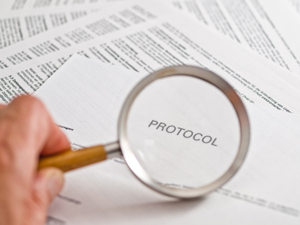- a set of step-by-step procedures, which is usually in the form of a simple one- or two-page document, that is utilized by educators to organize professional conversations or learning experiences to ensure that meeting, planning, or group-collaboration time is used efficiently, purposefully, and productively.
The National School Reform Faculty and the School Reform Initiative are the two primary sources of protocols in the United States, and hundreds of protocols can be downloaded from their websites.
General Purposes of Educational Protocol:
- Making sure that teachers remain focused on the specific, agreed-upon objectives and goals for a professional conversation.
- Building the basic communication and facilitation skills essential to effective professional collaboration.
- Helping to nurture a culture of collegiality, trust, and mutual appreciation.
- Ensuring everyone in the group has a chance to contribute and be heard during a discussion.
- Reducing the tendency toward subjective, digressive, or one-sided conversations.
- Promoting focused, substantive, in-depth conversations about a specific topic.
- Motivating active, respectful listening among all participants.
- Providing a “safe space” for teachers to share their work with colleagues without being concerned about negative criticism.
- Permitting difficult questions or issues to be raised in constructive ways.
- Eradicating unhelpful excuses, complaints, or comments about student behavior from professional discussion.
- Maintaining conversations focused on goals, solutions, and results.
Protocols are precisely designed to motivate all participants in a discussion to listen actively and respectfully and to contribute constructive comments and feedback while refraining from less productive forms of conversation, such as digressions, complaints, excuses, or disparaging comments.
Protocols may be used to organize discussions or group activities and, once completed, they are often followed by some form of debriefing process during which participants discuss what they learned from the experience and/or how the process worked well and how it could be improved.
Protocols are usually utilized in professional learning communities—groups of educators, usually teachers, who meet regularly, share expertise, and work collaboratively to improve their teaching skills and the academic performance of their students. In most cases, an assigned facilitator leads a group of teachers through a protocol to make sure that the conversation follows the established process and that everyone has an opportunity to contribute to the discussion. Protocols also commonly suggest that educators choose a “recorder” who takes notes on the group discussion, a “time keeper” who monitors time and keeps the group on schedule, and a “process observer” who monitors the discussion and points out problems that arose or positive outcomes that resulted.
Common Issues Associated with Protocols
People supporting protocols argue that their use helps groups of educators stay on task, avoid unhelpful or unproductive behaviors, and remain focused on goals and results. But to those recently introduced to protocol-guided conversations and activities, the process may feel artificial, stilted, or overly prescriptive.
Protocols are specifically designed to generate professional conversations and interactions that would not naturally occur without a protocol, and some educators may claim that they suppress the kind creative thinking or lucky accidents that can result from the free, unobstructed exchange of ideas. If protocols are poorly facilitated, or if they are poorly matched with the specific objectives of a particular conversation, any possible utility they might have provided could be undermined or diminished. For this reason, advocates of protocols typically propose that they only be utilized under the guidance of a trained or certified facilitator.
